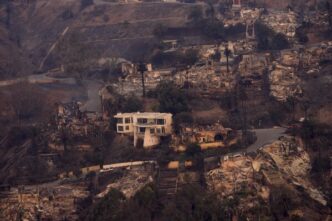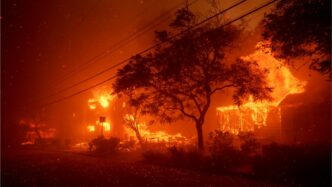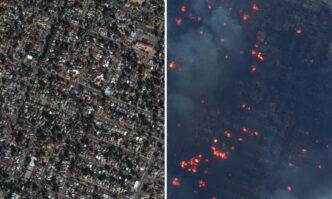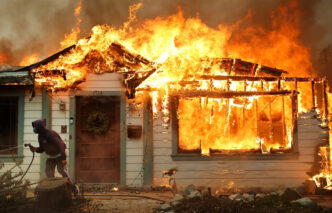California’s susceptibility to wildfires is a result of a combination of natural, climatic, and human factors. The state’s unique geography, vegetation, and climate create the perfect conditions for fires to ignite and spread rapidly. Understanding these factors helps explain why California experiences such frequent and intense wildfires.
1. Dry Climate and Drought Conditions
California has a Mediterranean climate with long, dry summers and short, wet winters. This cycle results in:
- Dried Vegetation: Prolonged heat during the summer months dries out grasses, shrubs, and trees, creating abundant fuel for fires.
- Extended Fire Season: Historically, California’s fire season lasted a few months, but it now spans most of the year due to warmer temperatures and less consistent rainfall.
- Droughts: Periodic droughts exacerbate the dryness of vegetation and reduce the availability of water for firefighting efforts.
2. Flammable Vegetation
The state’s diverse vegetation contributes significantly to its flammability:
- Chaparral Shrubs: Common in California, these shrubs contain volatile oils that ignite easily and burn intensely.
- Grasses and Dead Wood: Dead trees and dried grass, especially in areas affected by bark beetle infestations, provide ideal fuel for fires.
- Forest Density: Overgrown forests due to decades of fire suppression efforts lead to an accumulation of dry, flammable material.
3. Strong Winds
California is frequently affected by powerful winds that spread fires rapidly:
- Santa Ana Winds (Southern California): Hot, dry winds originating from inland deserts blow toward the coast, fanning flames and carrying embers over long distances.
- Diablo Winds (Northern California): Similar to Santa Ana winds, these dry winds exacerbate fire conditions in the north.
4. Lightning Strikes and Natural Ignition Sources
Lightning storms, particularly during dry conditions, can spark fires:
- Dry Lightning: These storms produce lightning without significant rainfall, igniting fires in remote, dry areas.
- Heat Waves: Extreme heat can dry out vegetation to the point where it becomes highly flammable, even without lightning.
5. Human Activity
Human activities are a major contributor to California’s wildfire problem:
- Power Lines: Faulty power lines and electrical equipment failures have sparked several major fires, including the devastating Camp Fire in 2018.
- Campfires and Cigarettes: Negligence with outdoor fires or discarded cigarette butts can ignite dry vegetation.
- Arson: Intentional fire-setting accounts for a small but significant percentage of wildfires.
6. Climate Change
Climate change is intensifying California’s fire risks:
- Rising Temperatures: Higher temperatures increase evaporation rates, drying out vegetation more quickly.
- Shifting Rain Patterns: Reduced and erratic rainfall means less moisture to mitigate fire risks.
- Longer Fire Seasons: Warmer weather extends the period during which fires can ignite and spread.
7. Urban-Wildland Interface
The expansion of residential areas into forested and rural regions increases wildfire risks:
- Proximity to Vegetation: Homes and infrastructure close to wildlands are more susceptible to fires.
- Increased Ignition Sources: Human presence in these areas increases the likelihood of accidental fire starts.
California’s flammability is the result of a perfect storm of natural factors, climatic changes, and human influences. Addressing the wildfire crisis requires a multi-faceted approach, including improved land management, fire-resistant construction, and measures to combat climate change. Without significant intervention, the state will continue to face devastating wildfires, endangering its residents, ecosystems, and economy.
Topics:






